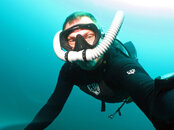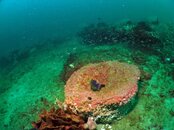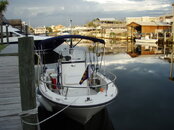Dr. Lecter
Contributor
One difference for solo single tank diving may be that you delete your long hosed-second stage in favor of a single necklaced second stage on a very short hose. The argument being that you're not going to be air sharing and the extra second stage adds an unnecessary failure point without giving any redundancy, plus one less hose.
Until I got a scooter, I generally thought it was more work (remove long hose, add LP plug, reverse for next buddy dive) than it was worth. Now that I frequently have to worry about unsecured second stages freeflowing due to scootering through the water, and am more solo than ever because I range much further away from whatever group I'm diving with (if any)...it makes a lot more sense.
I'm tempted to just camband a HP100 to the scooter as a keel, put a stage reg on it, and wear the BP/harness without any wing or tank. Now that'd be some minimalist solo diving
Until I got a scooter, I generally thought it was more work (remove long hose, add LP plug, reverse for next buddy dive) than it was worth. Now that I frequently have to worry about unsecured second stages freeflowing due to scootering through the water, and am more solo than ever because I range much further away from whatever group I'm diving with (if any)...it makes a lot more sense.
I'm tempted to just camband a HP100 to the scooter as a keel, put a stage reg on it, and wear the BP/harness without any wing or tank. Now that'd be some minimalist solo diving













